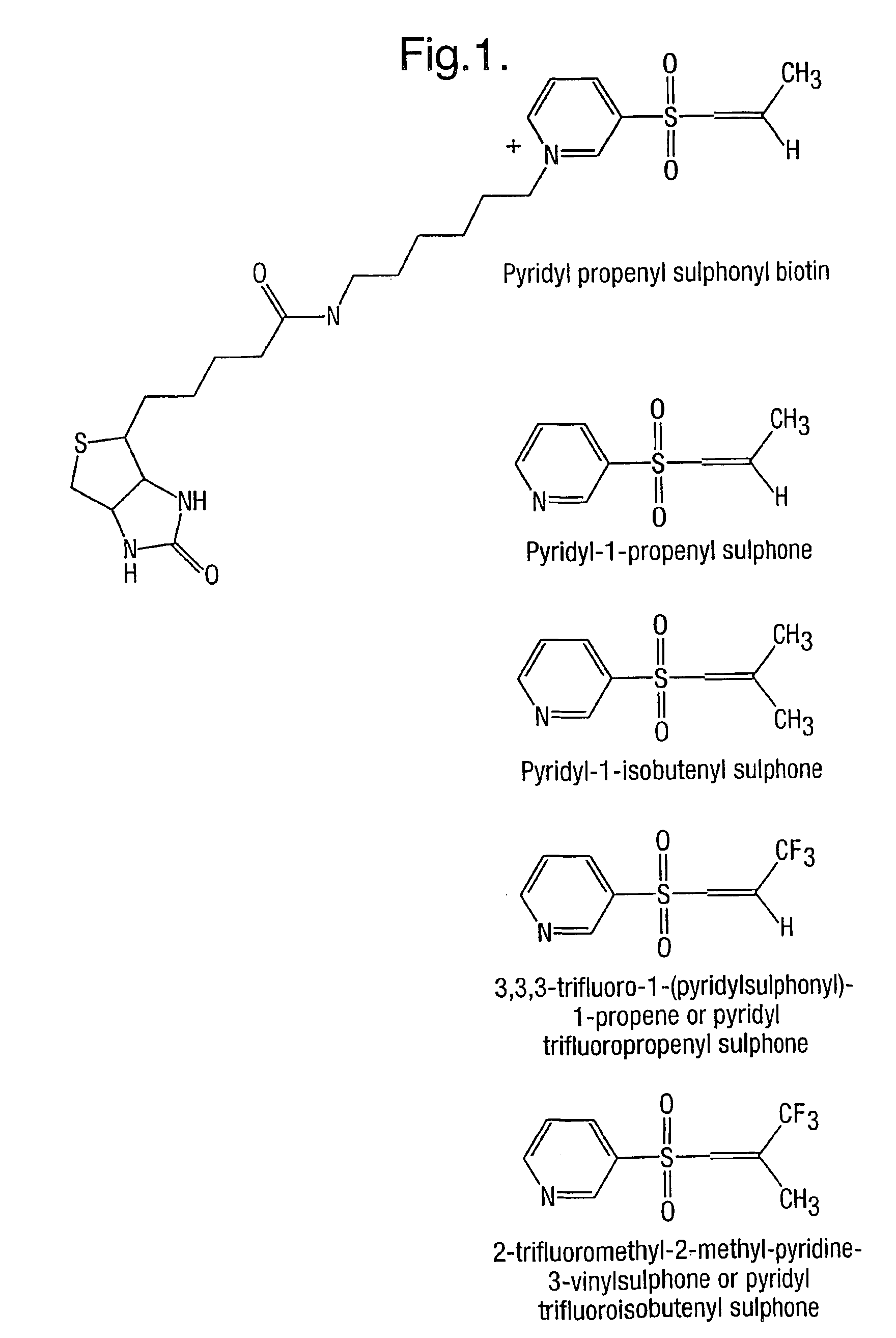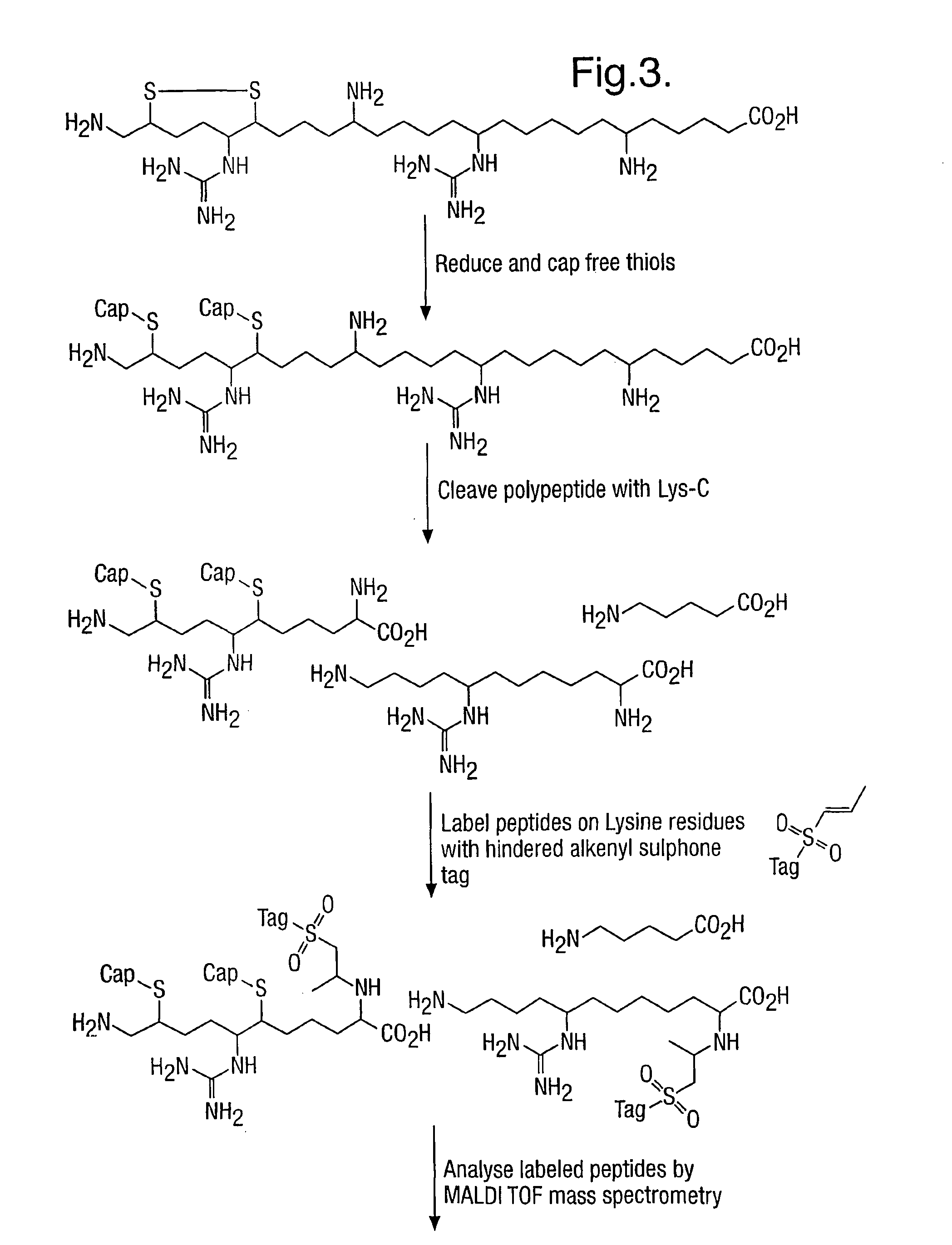Method for characterizing polypeptides
a polypeptide and polypeptide technology, applied in the field of mass fingerprinting methods, can solve the problems of cumbersome and relatively slow traditional methods for protein identification, difficulty in determining the pmf of a protein, and difficulty in determining the pmf, so as to and reduce cysteine disulphide bridges
- Summary
- Abstract
- Description
- Claims
- Application Information
AI Technical Summary
Benefits of technology
Problems solved by technology
Method used
Image
Examples
example 1
Labelling Conditions for Thiol and Epsilon Amino Group Labelling
[0230]Since most proteins typically have one or more cysteine residues, which may be cross-linked to form disulphide bridges, and since thiol groups of cysteine are the most reactive side-chains in a polypeptide, it is essential that protocols are found that block this functionality as well as any free epsilon amino groups. The hindered Michael reagents used in this invention will react readily with thiols as well as with epsilon amino groups and so both functionalities may be labelled in a single reaction.
[0231]Alternatively the thiols may be labelled with a different reagent prior to labelling the epsilon amino groups with the hindered Michael reagents of this invention.
[0232]Capping Thiol and Epsilon Amino Groups with Different Tags
[0233]In this example salmon Calcitonin (10° nmol, Calbiochem), which has 2 cysteine residues in a disulphide bridge, was dissolved in a denaturing buffer comprising 2 M urea, 0.5 M thiour...
PUM
| Property | Measurement | Unit |
|---|---|---|
| pH | aaaaa | aaaaa |
| mass spectrometry | aaaaa | aaaaa |
| peptide mass | aaaaa | aaaaa |
Abstract
Description
Claims
Application Information
 Login to View More
Login to View More - R&D
- Intellectual Property
- Life Sciences
- Materials
- Tech Scout
- Unparalleled Data Quality
- Higher Quality Content
- 60% Fewer Hallucinations
Browse by: Latest US Patents, China's latest patents, Technical Efficacy Thesaurus, Application Domain, Technology Topic, Popular Technical Reports.
© 2025 PatSnap. All rights reserved.Legal|Privacy policy|Modern Slavery Act Transparency Statement|Sitemap|About US| Contact US: help@patsnap.com



